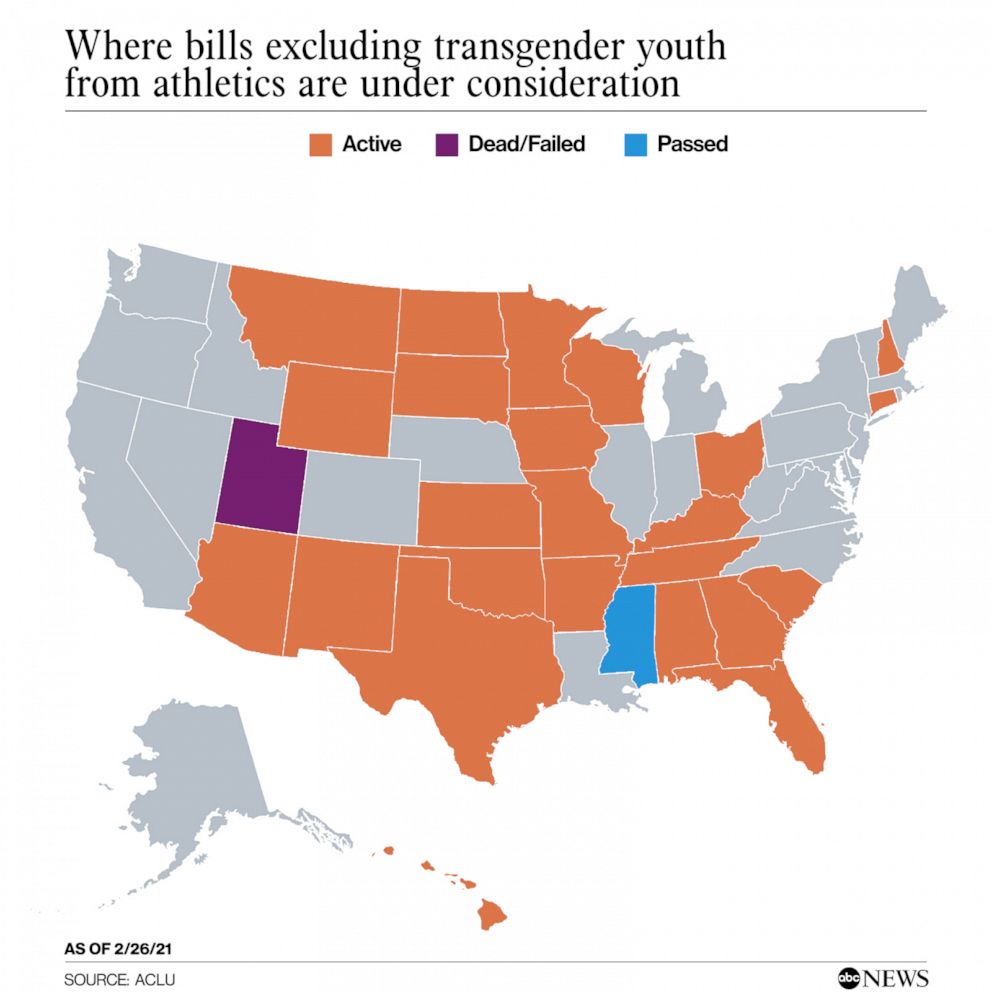The UK's Legal Definition Of Woman: Implications For Transgender Rights And Sex-Based Legislation

Table of Contents
The Absence of a Single, Explicit Legal Definition
A significant challenge in understanding the rights and protections afforded to women in the UK lies in the absence of a single, universally agreed-upon legal definition of "woman." Unlike some other jurisdictions, UK law doesn't offer a clear, statutory definition. Instead, the meaning of "woman" is often determined contextually, based on the specific legislation being applied. This reliance on interpretation across different acts creates significant challenges for legal clarity and consistency in applying the law.
- Examples of Implicit Definition: The Gender Recognition Act 2004 (GRA), for instance, allows transgender individuals to obtain a Gender Recognition Certificate (GRC), legally changing their gender. However, even with a GRC, the legal definition of "woman" remains fluid and depends on the specific legal context. Many other pieces of legislation implicitly define "woman" based on biological sex assigned at birth, even without explicit articulation.
- Challenges of Interpretation: This lack of explicit definition leads to inconsistencies. What constitutes a "woman" for the purposes of employment law might differ from the definition applied in sports or healthcare. This ambiguity leaves room for legal challenges and inconsistencies in the application of the law.
- Reliance on Biological Sex: Despite the absence of a clear definition, many areas of law still rely heavily on biological sex assigned at birth to define "woman," creating conflict and raising questions about inclusivity and fairness.
The Gender Recognition Act 2004 and its Limitations
The GRA 2004 provides a mechanism for transgender individuals to obtain a GRC, allowing them to legally change their gender. This involves meeting specific criteria, including living in their acquired gender for at least two years and providing medical evidence. However, the GRA's impact is limited, and it does not provide full legal recognition in all contexts.
- Limitations of the GRC: A GRC doesn't automatically change all aspects of a person's legal status. For example, while it affects aspects like marriage certificates and passports, it doesn't always override the definition of "woman" in other legislation or in practice.
- Issues with Single-Sex Spaces: The GRA's limitations become particularly apparent when considering access to single-sex spaces, such as domestic violence shelters, prisons, or changing rooms. The question of whether a transgender woman, even with a GRC, should be permitted access to these spaces often leads to legal and social conflicts.
- Debate Surrounding GRA Reform: The GRA has been the subject of ongoing debate and calls for reform. Arguments center around whether the current process is sufficiently inclusive and whether it adequately addresses the needs and rights of transgender individuals while maintaining protections for other groups.
Impact on Sex-Based Legislation and Services
The ambiguous legal definition of "woman" significantly impacts access to sex-based services and legislation aimed at protecting women.
- Access to Single-Sex Services: The lack of a clear definition creates ongoing challenges for accessing services designed for women. This is particularly pertinent in areas such as domestic violence shelters, where the safety and well-being of cisgender women must be balanced against the needs of transgender women. Similar challenges arise in healthcare and prison settings.
- Equal Opportunities Legislation: The ambiguity complicates the application of equal opportunities legislation. Determining whether discrimination based on sex has occurred becomes more difficult when there's no universally accepted definition of "woman."
- Discrimination Claims: The current lack of clarity opens the door to potential discrimination claims from both transgender and cisgender women, highlighting the urgent need for a more precise and inclusive legal framework. Cases involving exclusions from single-sex spaces or unequal treatment based on gender identity frequently end up in court, further emphasizing the need for legal clarity.
The Role of the Courts in Shaping the Definition
In the absence of a statutory definition, the courts have played a significant role in shaping the understanding of "woman" in UK law through case law. Judicial interpretations, however, have not always been consistent, leading to further ambiguity.
- Judicial Interpretations: Court decisions in various cases have offered insights into how judges interpret "woman" in different legal contexts. These interpretations, while offering guidance, can lack consistency across different cases and judges.
- Inconsistencies in Judicial Interpretation: The varying interpretations across different courts and cases have created a patchwork of legal precedents, resulting in uncertainty and inconsistency in the application of the law.
- Judicial Review: Judicial review provides a mechanism for challenging legislation and government policies that are perceived as discriminatory or inconsistent with human rights principles. It allows for court scrutiny of how the definition of "woman" is applied in practice.
Potential for Future Legislative Changes
The ongoing debate necessitates exploring potential legislative reforms to clarify the UK’s legal definition of woman.
- Statutory Definition: One approach is to introduce new legislation providing a clear statutory definition of "woman." This definition would need careful consideration to balance the rights of transgender individuals with protections for women.
- Amendments to the GRA: Another option involves amending the GRA to address its limitations and improve its effectiveness in achieving full legal recognition for transgender individuals.
- Political and Social Factors: The political climate and societal views on transgender rights will significantly influence any potential legislative changes.
Conclusion
The lack of a clear, legally defined "woman" in the UK presents significant challenges for both transgender rights and sex-based legislation. The interplay between the GRA 2004, court rulings, and various pieces of legislation leads to inconsistencies and ambiguities. Understanding the UK’s legal definition of woman, or rather, the lack thereof, is crucial for navigating the complex landscape of transgender rights and ensuring fair application of the law. Further debate and potential legislative reform are needed to clarify the definition and address the ongoing tension between competing rights and interests. A clearer understanding of the UK’s legal definition of woman is essential for creating a more equitable and just society. The call for a clearer and more inclusive legal framework surrounding the definition of "woman" is paramount for navigating these complex issues fairly and effectively.

Featured Posts
-
 Prank Call To Shedeur Sanders Son Of Atlanta Falcons Defensive Coordinator Offers Apology
Apr 29, 2025
Prank Call To Shedeur Sanders Son Of Atlanta Falcons Defensive Coordinator Offers Apology
Apr 29, 2025 -
 Nws Kentucky Get Ready For Severe Weather Awareness Week
Apr 29, 2025
Nws Kentucky Get Ready For Severe Weather Awareness Week
Apr 29, 2025 -
 Actor Alan Cumming Recalls Favorite Childhood Activity In Scotland
Apr 29, 2025
Actor Alan Cumming Recalls Favorite Childhood Activity In Scotland
Apr 29, 2025 -
 Test Porsche Cayenne Gts Coupe Czy Spelnia Oczekiwania
Apr 29, 2025
Test Porsche Cayenne Gts Coupe Czy Spelnia Oczekiwania
Apr 29, 2025 -
 Family Appeals For Information On Missing British Paralympian In Las Vegas
Apr 29, 2025
Family Appeals For Information On Missing British Paralympian In Las Vegas
Apr 29, 2025
Latest Posts
-
 Adidas Spring Sale Best Deal On 14 Slides
Apr 30, 2025
Adidas Spring Sale Best Deal On 14 Slides
Apr 30, 2025 -
 Incident Near Yate Recycling Centre Requires Air Ambulance
Apr 30, 2025
Incident Near Yate Recycling Centre Requires Air Ambulance
Apr 30, 2025 -
 Score 14 Adidas Slides Spring Sale Deals
Apr 30, 2025
Score 14 Adidas Slides Spring Sale Deals
Apr 30, 2025 -
 Live Update Air Ambulance Response Near Yate Recycling Centre
Apr 30, 2025
Live Update Air Ambulance Response Near Yate Recycling Centre
Apr 30, 2025 -
 Limited Time Offer Grab 14 Adidas Slides Now
Apr 30, 2025
Limited Time Offer Grab 14 Adidas Slides Now
Apr 30, 2025
